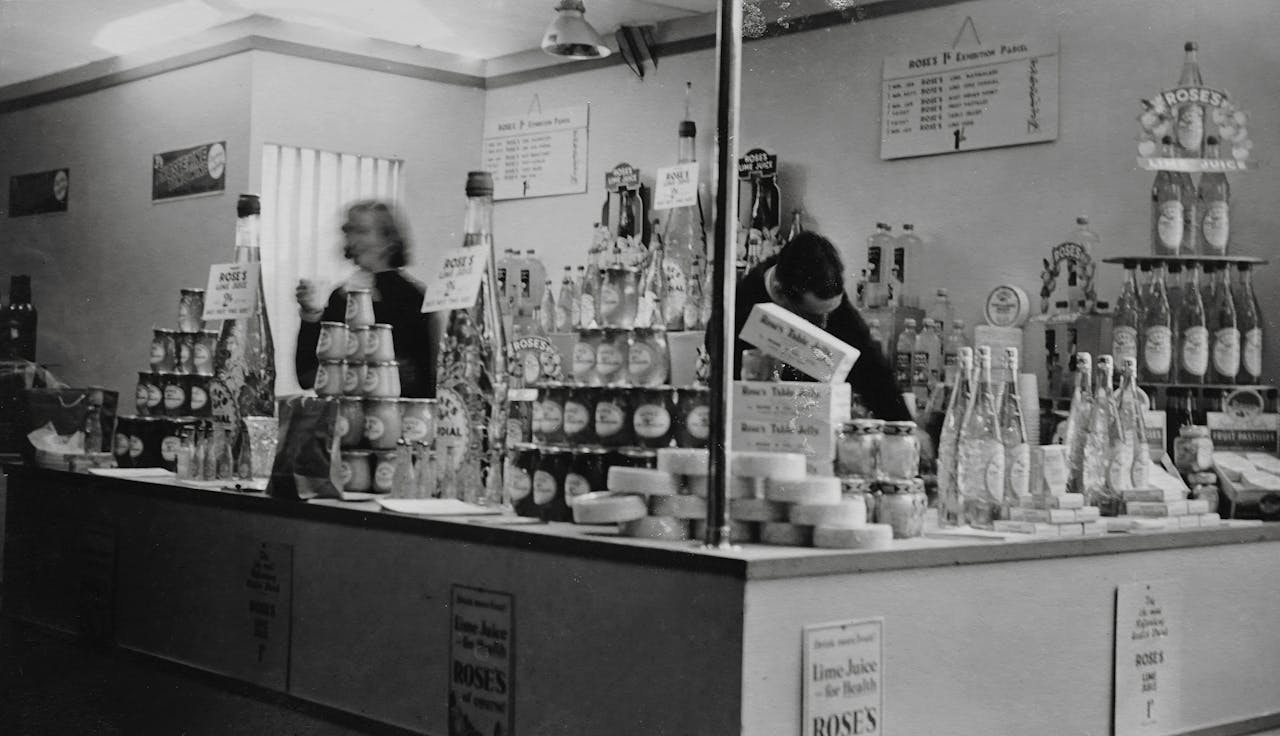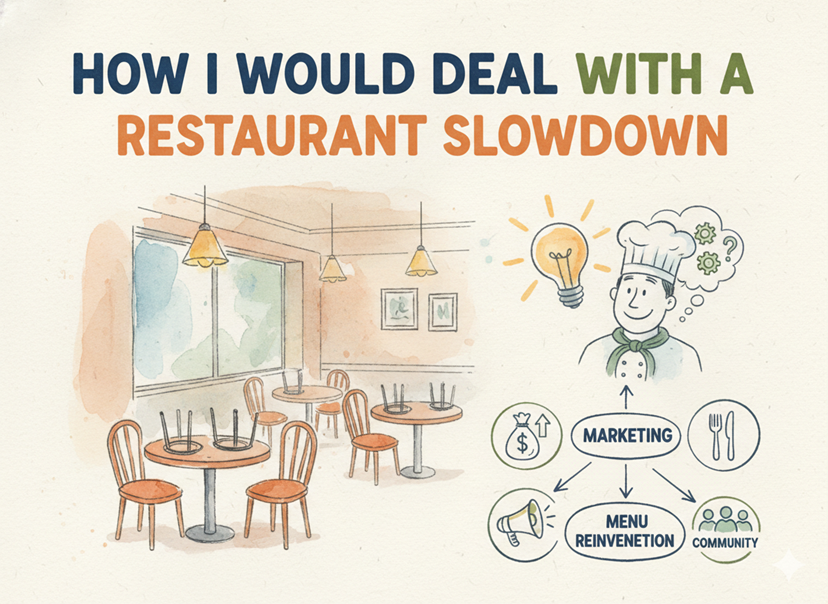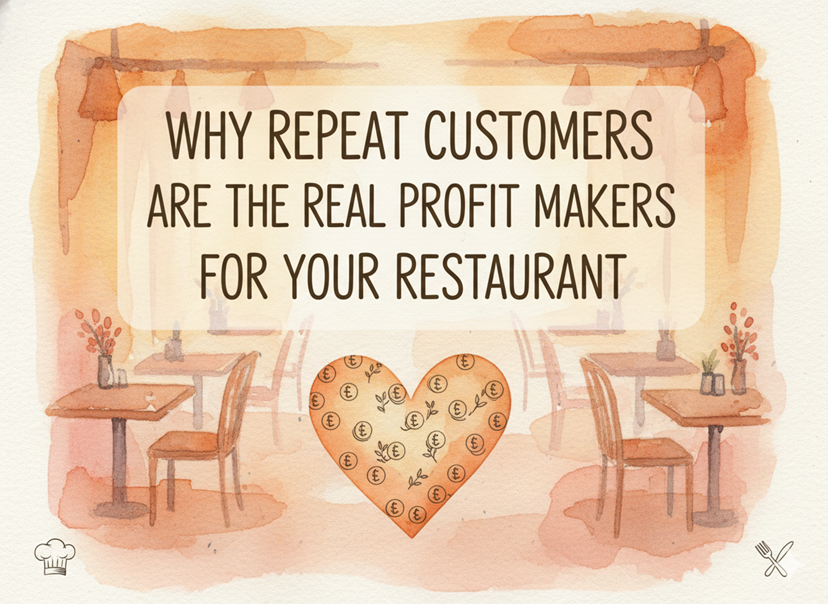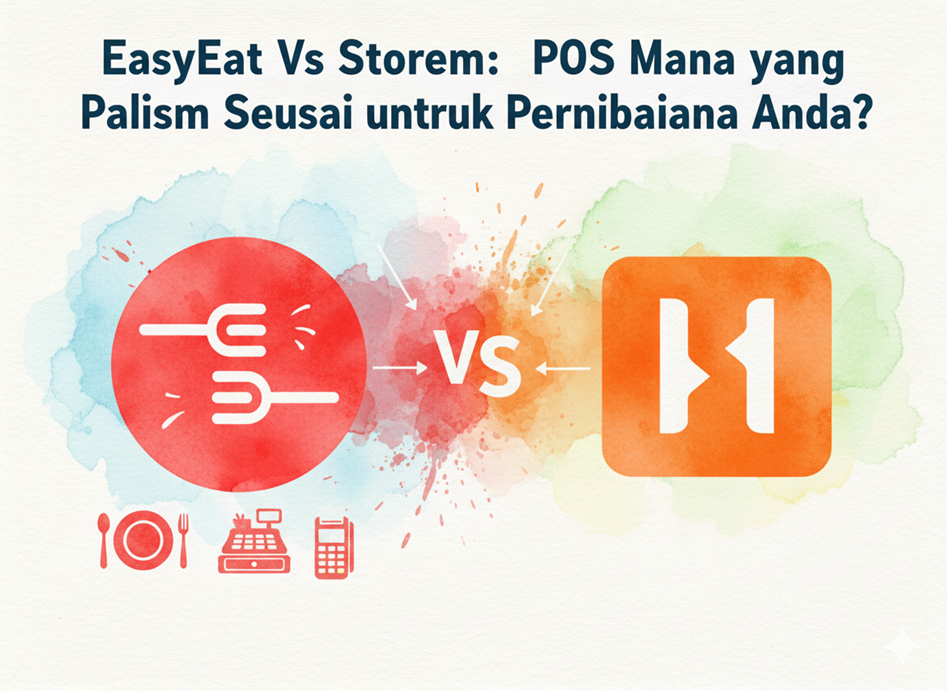Introduction
- History and Evolution of Food Courts
- The Food Court Business Model
- Tenant Mix and Vendor Selection
- Design and Layout of Food Courts
- Customer Experience and Behavior
- Marketing and Promotion Strategies
- Operational Challenges and Efficiency
- Case Studies and Examples
- Future Trends and Outlook
- References
Introduction
Food courts have become a ubiquitous feature in modern urban life, offering a convenient and diverse dining experience under one roof. These communal dining spaces typically house multiple food vendors, each providing a variety of culinary options ranging from fast food and local delicacies to international cuisines. Found in shopping malls, airports, business complexes, and other high-traffic areas, food courts cater to the fast-paced lifestyles of today’s consumers, providing quick and affordable meal options.
In recent years, the popularity of food courts has surged, driven by several factors. Urbanization and the rise of large shopping and entertainment complexes have created a demand for centralized dining options. Consumers increasingly value convenience, variety, and speed, which food courts are uniquely positioned to provide. The diverse range of food options appeals to groups and families with varied tastes, making food courts a preferred dining choice for many.
This article explores the multifaceted world of food courts, going deep into their history and evolution, business models, tenant selection processes, and the design and layout that contribute to their success. We will examine how food courts create compelling customer experiences, employ marketing strategies to attract diners, and manage operational challenges. Through case studies and examples, we will highlight successful food courts and discuss emerging trends and future outlooks for this dynamic segment of the food service industry. Join us as we uncover the intricacies of food courts and their impact on modern dining.
1. History and Evolution of Food Courts
Food courts can be traced back to the mid-20th century when urbanization and the development of shopping malls created a need for centralized dining options. The initial purpose was to enhance the shopping experience by providing a quick and easy way to eat without leaving the mall, encouraging longer visits and increased spending. The first food court is widely credited to the Paramus Park shopping mall in New Jersey, which opened in 1974. Designed to provide a convenient and efficient dining experience for shoppers, this early food court featured multiple food vendors in a communal dining space, setting the template for future developments.
Early examples of food courts emerged in large shopping malls and public spaces where there was a high concentration of foot traffic. Besides Paramus Park, other notable early food courts include those in major malls such as Southdale Center in Edina, Minnesota, and Toronto’s Eaton Centre. These food courts offered a mix of fast food and local eateries, providing a quick and varied dining experience that catered to the needs of busy shoppers and visitors.
Food courts have undergone significant evolution since their inception. Initially, they were simple, utilitarian spaces designed primarily for convenience. Over time, the concept expanded and diversified, reflecting changes in consumer preferences and urban development. Modern food courts are now sophisticated, well-designed spaces that emphasize not only convenience but also ambiance, quality, and variety.
As societies evolve, various cultural and economic factors have influenced the development of food courts:
Urbanization: As cities grew and more people moved to urban areas, the demand for convenient dining options increased. Food courts emerged as a practical solution to provide quick meals in high-traffic areas.
Consumer Preferences: The rise of the fast food culture in the 1970s and 1980s popularised the concept of quick, affordable meals. Over time, consumer preferences shifted towards more diverse and health-conscious options, prompting food courts to adapt and offer a wider range of cuisines.
Globalization: As cities became more multicultural, the demand for international cuisines grew. Food courts began to feature a broader array of food vendors, showcasing global culinary trends and catering to diverse tastes.
Economic Factors: The economic benefits of food courts, such as shared infrastructure and lower operational costs for vendors, made them an attractive business model. Additionally, food courts contribute significantly to the revenue of shopping malls and other commercial spaces, making them a valuable asset for property developers.
Timeline of Evolution of Food Court Concept
1970s: Birth of the Modern Food Court
- Early Examples: The first food court, established in Paramus Park Mall in New Jersey in 1974, set the standard for future developments. This food court featured multiple vendors in a centralized dining area, allowing shoppers to enjoy a variety of foods in one convenient location.
- Initial Purpose: The primary goal was to enhance the shopping experience by providing quick, convenient dining options. The concept proved popular, leading to rapid adoption in shopping malls across the United States and other countries.
1980s: Expansion and Diversification
- Introduction to Airports and Colleges: The food court model expanded beyond shopping malls to other high-traffic areas such as airports, college campuses, and business districts. This expansion was driven by the need for quick and diverse food options in places with concentrated populations.
- Standardization and Branding: Major fast food chains began to see the potential of food courts and started establishing outlets in these spaces. The presence of well-known brands helped standardize food quality and service, attracting more customers.
1990s: Enhancing the Experience
- Design and Ambiance: The focus shifted towards improving the design and ambiance of food courts. Operators invested in better seating arrangements, improved lighting, and aesthetic enhancements to create a more pleasant dining environment.
- Diverse Offerings: Food courts started to diversify their offerings beyond traditional fast food. Ethnic cuisines, healthier options, and gourmet foods became more common, catering to evolving consumer tastes and dietary preferences.
2000s: Technological Integration and Upscaling
- Technology Adoption: The integration of technology began to transform food courts. Digital menus, self-service kiosks, and mobile ordering systems were introduced to enhance customer convenience and streamline operations.
- Upscaling: The concept of upscale food courts or “food halls” emerged. These spaces focused on high-quality, artisanal foods and a more refined dining experience. Examples include Chelsea Market in New York City and Time Out Market in Lisbon, which combine diverse culinary offerings with a market-like atmosphere.
2010s: Embracing Culinary Trends
- Local and Artisanal Foods: There was a significant shift towards featuring local and artisanal food vendors. This trend was driven by consumer demand for unique and authentic dining experiences.
- Health and Sustainability: Health-conscious and environmentally sustainable options have become more prevalent. Many food courts began offering organic, vegetarian, and vegan options and implemented sustainable practices such as recycling and reducing food waste.
- Community and Events: Food courts started to position themselves as community hubs by hosting events, cooking classes, and live entertainment. This approach not only drew more foot traffic but also built a sense of community around the food court.
2020s and Beyond: Future Trends
- Smart Food Courts: The latest trend involves the use of smart technology to further enhance the customer experience. Innovations such as AI-driven menu recommendations, personalized offers, and advanced data analytics are being used to optimize operations and cater to individual preferences.
- Sustainability and Ethics: The focus on sustainability continues to grow, with food courts adopting more eco-friendly practices and supporting ethical sourcing of ingredients.
- Global Influences: As global culinary trends continue to evolve, food courts are increasingly featuring international cuisines and fusion foods, reflecting the diverse tastes of modern consumers.
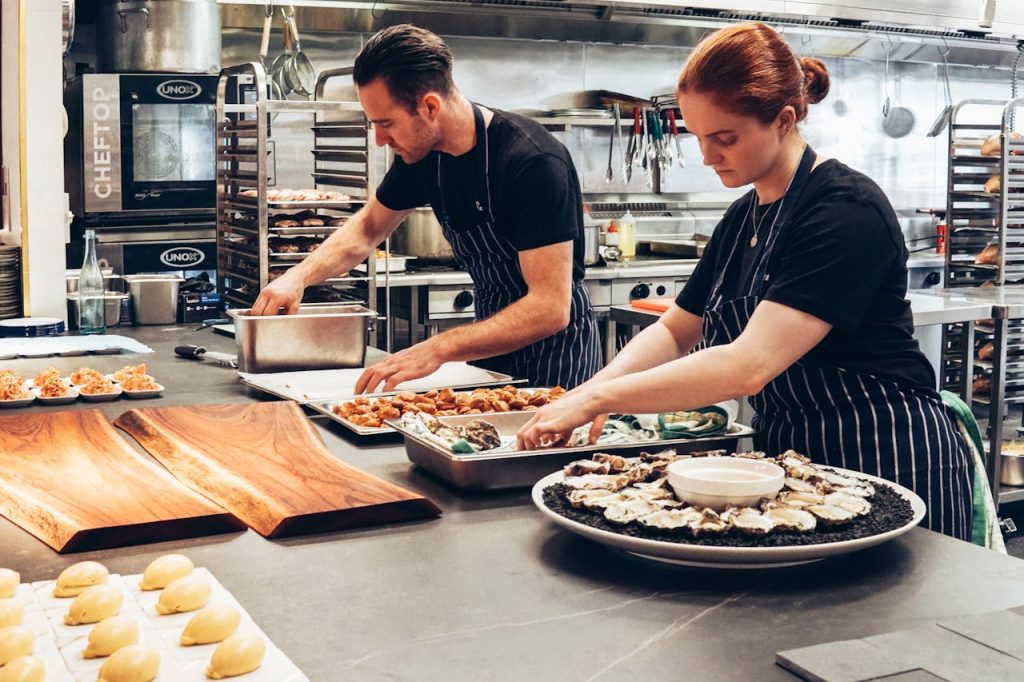
2. The Food Court Business Model
Primary Components of the Food Court Business Model
Leasing Arrangements
Food courts operate on a leasing model where vendors rent space within the food court area. These leases can vary significantly based on factors such as location, foot traffic, and the size of the vendor’s space. The most common leasing arrangements include:
- Fixed Rent: Vendors pay a fixed monthly rent for their space, providing the food court operator with a predictable income.
- Revenue Sharing: Instead of a fixed rent, vendors may agree to share a percentage of their sales with the food court operator. This model aligns the interests of both parties, as the operator benefits directly from the vendor’s success.
- Hybrid Model: A combination of fixed rent and revenue sharing, where vendors pay a base rent plus a percentage of their sales once a certain threshold is reached.
Leasing agreements in food courts are structured to balance the needs of vendors and operators. Fixed rent agreements provide a stable income for operators while revenue-sharing models create a partnership where both parties benefit from increased sales. Hybrid models offer flexibility, ensuring that vendors can manage their expenses while operators still benefit from successful vendors.
Revenue Streams
Food courts generate revenue through various streams:
- Rent from Vendors: The primary source of income for food court operators is the rent paid by vendors. The structure of these rents can vary, but they are typically the most significant revenue stream.
- Service Charges: Additional charges for services such as cleaning, security, and maintenance of communal areas.
- Advertising and Sponsorship: Food courts can generate additional revenue by selling advertising space within the food court area or through sponsorship deals with brands.
- Event Space Rental: Some food courts offer their communal areas for events, generating extra income.
The financial relationship between operators and vendors is symbiotic. Operators provide the infrastructure and foot traffic, while vendors attract and retain customers with their food offerings. Operators benefit from a steady income stream through rent and service charges, while vendors gain access to a high-traffic location with shared marketing and operational support.
Operational Efficiency
Efficient operations are essential for the profitability of food courts. Key aspects include:
- Vendor Support: Providing vendors with essential services like waste management, security, and marketing support to ensure smooth operations.
- Customer Experience: Maintaining a clean, safe, and pleasant environment to attract and retain customers. This includes ensuring adequate seating, clean restrooms, and efficient traffic flow.
- Technology Integration: Using technology for point-of-sale systems, digital menus, and customer feedback to streamline operations and enhance the dining experience.
Customer Experience

Providing a positive customer experience is critical for the success of a food court. This includes factors such as:
- Cleanliness: Regular cleaning of communal areas and vendor spaces to maintain hygiene.
- Ambiance: Creating a welcoming and comfortable environment through decor, lighting, and seating arrangements.
- Service Speed: Ensuring that vendors can serve customers quickly to reduce wait times.
- Variety and Quality: Offering a diverse range of high-quality food options to cater to different tastes and preferences.
The Role of Food Court Operators
Food court operators play a crucial role in managing and maintaining the food court.
They are responsible for the overall management of the food court, including vendor selection, facility maintenance, marketing, and customer service. They ensure that the food court remains a desirable location for both vendors and customers by maintaining high standards of cleanliness, safety, and ambiance.
Their responsibilities include:
- Vendor Selection and Management: Curating a mix of vendors to ensure a diverse and appealing selection for customers. This involves negotiating leases, monitoring vendor performance, and addressing any issues that arise.
- Facility Management: Overseeing the maintenance and cleanliness of the communal areas, ensuring that the food court remains a pleasant place for customers to dine.
- Marketing and Promotion: Implementing marketing strategies to attract foot traffic, such as hosting events, running promotions, and utilizing social media.
- Customer Service: Addressing customer complaints and feedback to continually improve the dining experience.
3. Tenant Mix and Vendor Selection
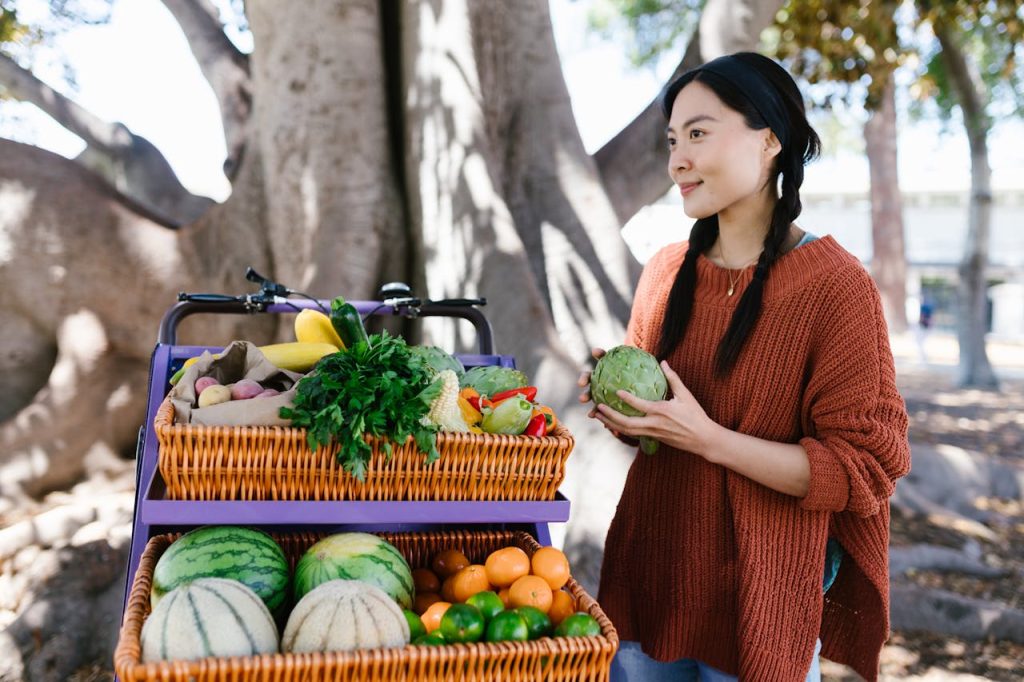
A balanced tenant mix in a food court offers several benefits. It enhances customer satisfaction by catering to diverse tastes and dietary needs. Unique and varied offerings provide a competitive advantage, setting the food court apart from competitors. A wide range of options encourages customers to spend more time at the food court, increasing dwell time. Additionally, reflecting local and international culinary trends helps position the food court as a cultural hub, appealing to both locals and tourists.
Food court operators usually take a strategic approach to selecting and curating their tenant mix to ensure a well-rounded dining experience that appeals to a broad audience. This involves thorough market research, understanding customer demographics, and keeping an eye on current food trends. Operators typically aim to strike a balance between well-known chains that draw crowds and unique, local vendors that add character and diversity to the food court.
Operators use several criteria to choose vendors, including:
- Popularity and Brand Recognition: Well-known brands can draw significant foot traffic, enhancing the food court’s appeal.
- Quality and Consistency: Vendors must maintain high standards of food quality and service consistency to meet customer expectations.
- Diversity of Cuisine: Offering a variety of cuisines ensures that the food court can cater to diverse tastes and dietary preferences.
- Operational Capacity: Vendors need to demonstrate the ability to handle high volumes of customers efficiently, particularly during peak times.
- Reputation and Reliability: A strong reputation for reliability, hygiene, and customer service is crucial for long-term success.
Operators can have predefined criteria in terms of what type of vendors they are looking for in terms of cuisine type and quality to maintain diversity. They are also open to having trial periods for new vendors to assess their quality and performance before signing long-term leases. They get regular feedback from the customers to understand their dining preferences and make informed decisions about vendor selection and retention.
Variety and diversity in vendor selection are critical for several reasons. Firstly, they enhance customer satisfaction by catering to different tastes and dietary needs, attracting a wider audience. Secondly, unique and varied food offerings provide a competitive advantage, differentiating the food court from competitors and making it a more attractive destination. Additionally, a wide range of options encourages customers to spend more time at the food court, increasing the likelihood of repeat visits and higher spending. Lastly, reflecting local and international culinary trends helps position the food court as a cultural hub, appealing to both locals and tourists.
Maintaining a balanced tenant mix presents several challenges. High vendor turnover rates can disrupt the balance of the tenant mix and affect customer loyalty, making it crucial to ensure long-term vendor commitments. Economic viability is another challenge, as some vendors may struggle financially, especially during economic downturns, impacting the overall diversity and stability of the food court. Additionally, keeping up with rapidly changing food trends requires operators to continuously assess and adapt their tenant mix to stay relevant. Physical space constraints can limit the number of vendors and types of cuisine that can be accommodated. Lastly, conflict management is essential, as ensuring harmonious relationships between vendors with competing interests is critical for smooth operations.
4. Design and Layout of Food Courts
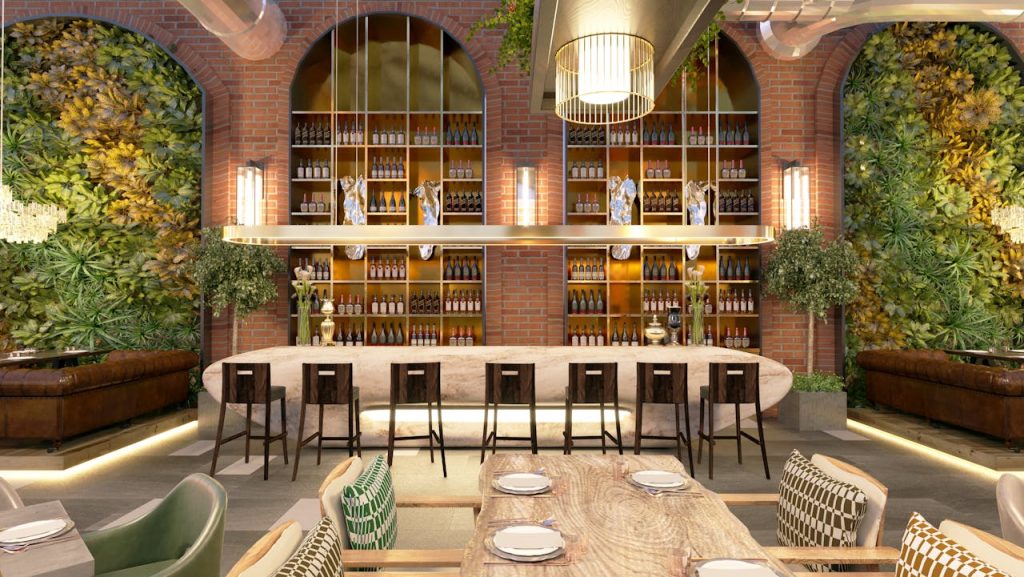
The layout and seating arrangements of a food court are crucial for creating a pleasant and functional dining environment. An open and inviting layout with a variety of seating options ensures comfort and accommodates different group sizes. Aesthetic appeal, achieved through thematic design, good lighting, and thoughtful decor, creates an engaging and enjoyable atmosphere that can enhance the overall dining experience.
Key Design Elements of Successful Food Courts
Layout and Seating Arrangements
- Open and Inviting Layout: A successful food court features an open layout that is easy to navigate. Clear sightlines allow customers to see all available options without obstruction.
- Seating Variety: A mix of seating options, including communal tables, individual booths, high-top counters, and outdoor seating, caters to different group sizes and preferences. Comfortable and well-spaced seating encourages longer visits and enhances the dining experience.
- Accessibility: Ensuring the space is accessible to all customers, including those with disabilities, is crucial. This includes wide aisles, ramps, and seating areas that accommodate wheelchairs.
Aesthetic Appeal
- Thematic Design: Incorporating a thematic or cohesive design aesthetic can create a memorable and engaging environment. Themes can reflect local culture, historical elements, or contemporary trends.
- Lighting: Good lighting is essential for creating ambiance. Natural light is preferred, but a combination of task lighting for dining areas and ambient lighting for the overall atmosphere works well.
- Decor and Ambiance: The use of colors, textures, and materials that evoke warmth and comfort can enhance aesthetic appeal. Decorative elements such as plants, art, and water features can add to the attractiveness.
Good design facilitates easy navigation, reduces wait times, and ensures comfort, all of which enhance customer satisfaction. Clear pathways, effective signage, and strategic placement of vendors improve customer flow, making it easier for patrons to explore all dining options. Adequate spacing and comfortable seating arrangements contribute to a relaxing dining experience, encouraging customers to stay longer and return frequently.
Impact of Layout on Customer Experience and Vendor Performance
Customer Experience: A well-designed food court layout significantly enhances customer experience by ensuring ease of navigation, where clear signage and strategically placed pathways guide customers effortlessly to different vendors. Comfort is prioritized through adequate spacing between tables and seating areas, preventing overcrowding and allowing diners to enjoy their meals in a relaxed environment. Effective queue management is also critical, with designated queuing areas and clear pathways helping to manage lines and reduce wait times, thereby improving overall customer satisfaction.
Vendor Performance: The layout of a food court greatly impacts vendor performance by ensuring visibility and operational efficiency. Vendors placed in high-traffic areas with good visibility are more likely to attract customers, and the strategic placement of popular vendors can drive foot traffic to less frequented areas. Operational efficiency is enhanced by layouts that facilitate easy movement for staff and have well-organized service areas, such as kitchens and order counters, allowing vendors to serve customers promptly. Additionally, centralized facilities for waste disposal, cleaning, and storage streamline operations, benefiting all vendors and contributing to a smooth-running food court.
Latest Trends in Food Court Design
Modern design trends such as sustainability, technology integration, experiential elements, and a focus on health and wellness are transforming food courts. Sustainable design reduces environmental impact and appeals to eco-conscious customers. Technology integration, including digital ordering systems and free Wi-Fi, enhances convenience and connectivity. Experiential elements like live cooking stations and entertainment areas create a dynamic and engaging environment. Health-focused design caters to the growing demand for wellness-oriented dining options, attracting health-conscious patrons.
Sustainability and Eco-Friendliness
- Green Building Materials: The use of sustainable materials such as reclaimed wood, recycled metal, and eco-friendly paints contribute to an environmentally responsible design.
- Energy Efficiency: Incorporating energy-efficient lighting, heating, and cooling systems reduces environmental impact and operational costs.
Technology Integration
- Digital Menus and Ordering Systems: Implementation of digital menus, self-service kiosks, and mobile ordering apps enhances convenience and speeds up service.
- Free Wi-Fi and Charging Stations: Providing free Wi-Fi and ample charging stations cater to the modern customer who often seeks a place to work or stay connected while dining.
Experiential and Interactive Elements
- Live Cooking Stations: Open kitchens and live cooking stations add an interactive element, allowing customers to see their food being prepared and enhancing the dining experience.
- Entertainment and Events: Incorporating spaces for live music, performances, or cooking classes can draw in crowds and create a vibrant, community-focused atmosphere.
Health and Wellness Focus
- Health-Conscious Design: Designing spaces that promote healthy eating, such as salad bars, smoothie stations, and juice bars, reflects the growing trend toward wellness.
- Relaxation Zones: Areas designed for relaxation, including comfortable seating and quieter sections, provide a break from the hustle and bustle, appealing to those seeking a more tranquil dining experience.
5. Customer Experience and Behavior

Customers prefer food courts for their convenience, variety, quick service, affordability, and social atmosphere. The ability to choose from a wide range of cuisines and the presence of familiar brands often influence the decision to dine at a food court. Additionally, the casual and relaxed environment makes food courts a preferred choice for social gatherings and quick meals.
Here are some of the benefits food courts offer that make them attractive to customers:
- Convenience: Food courts provide a one-stop dining solution with multiple food options in one location, making it easy for groups with different preferences to dine together.
- Variety: The wide range of cuisines and dishes available in food courts caters to diverse tastes and dietary needs, offering something for everyone.
- Quick Service: Fast food and quick service models in food courts appeal to those looking for a quick meal during busy schedules.
- Affordability: Competitive pricing compared to standalone restaurants makes food courts an attractive option for budget-conscious diners.
- Social Atmosphere: Food courts often serve as social hubs where friends, families, and colleagues can gather and enjoy a casual dining experience.
Since, by design, food courts need to cater to a diverse set of customers, they need to employ various strategies to ensure that their experience is inclusive. Some of the strategies are given below
- Diverse Culinary Options: Offering a mix of international cuisines, local specialties, and dietary-specific options (vegetarian, vegan, gluten-free, etc.) ensures that all customers can find something they like.
- Family-Friendly Facilities: Providing amenities such as high chairs, play areas, and kid-friendly menus makes food courts appealing to families with children.
- Accessibility Features: Ensuring that the food court is accessible to people with disabilities through ramps, wide aisles, and accessible restrooms cater to all customers.
- Cultural Sensitivity: Including vendors that cater to specific cultural or religious dietary requirements (halal, kosher, etc.) broadens the appeal of the food court.
6. Marketing and Promotion Strategies

Food courts employ a variety of marketing and promotional tactics to attract and retain customers. Hosting events and festivals creates excitement and draws crowds. Loyalty programs encourage repeat visits by offering rewards and discounts. Partnerships with local businesses and influencers help expand reach and attract new customers. Traditional advertising, combined with digital advertising, ensures broad visibility and engagement.
Food courts use a mix of traditional and innovative marketing strategies to attract new customers and retain existing ones. Key approaches include:
- Offering Diverse Cuisines: By providing a wide range of food options, food courts can cater to varied tastes and preferences, attracting a broader audience.
- Convenience and Accessibility: Located in high-traffic areas such as malls, airports, and business districts, food courts leverage their convenient locations to draw customers.
- Promotions and Discounts: Special deals, discounts, and seasonal promotions can entice customers to visit more frequently.
- Quality and Service Consistency: Maintaining high standards of food quality and service ensures customer satisfaction and repeat visits.
What marketing strategies are most effective for food courts?
Several strategies have proven effective for food courts:
- Events and Festivals: Hosting food festivals, themed nights, and cooking competitions can create buzz and attract crowds.
- Loyalty Programs: Implementing loyalty programs with rewards, discounts, and special offers encourages repeat business and builds customer loyalty.
- Partnerships: Collaborating with local businesses, event organizers, and influencers can expand reach and attract new customers.
- Advertising Campaigns: Utilising both traditional advertising (billboards, flyers) and digital advertising (social media ads, Google AdWords) helps increase visibility.
Digital marketing and social media engagement have a significant impact on food court success. Active social media presence allows food courts to connect with customers, share updates, and promote events. Engaging content, such as behind-the-scenes videos and food photography, builds a loyal online community. Collaborations with influencers and encouraging online reviews enhance credibility and attract more visitors. Email marketing keeps customers informed and engaged with personalized offers and updates. Here are some of the ways social media can be leveraged in marketing and promotions.
- Social Media Engagement: Active presence on platforms like Facebook, Instagram, and Twitter allows food courts to connect with customers, share updates, and promote events.
- Content Marketing: Posting engaging content, such as behind-the-scenes videos, customer testimonials, and food photography, helps build a community and attract followers.
- Influencer Collaborations: Partnering with local influencers and food bloggers can amplify reach and attract new customers through authentic endorsements.
- Online Reviews and Ratings: Encouraging satisfied customers to leave positive reviews on platforms like Yelp, TripAdvisor, and Google My Business boosts credibility and attracts more visitors.
- Email Marketing: Sending out newsletters with updates, promotions, and personalized offers keeps customers informed and engaged.
7. Operational Challenges and Efficiency
Operational challenges in food courts include staffing issues like high turnover rates and recruitment difficulties, supply chain management concerns such as ensuring consistent quality and dealing with cost fluctuations, and maintenance and cleanliness challenges that require constant attention to facility upkeep and hygiene standards. Additionally, coordinating among various vendors to ensure operational harmony and effective use of shared resources is essential. Below are the details of the challenges that are usually faced by food courts.
- Staffing:
- High Turnover Rates: Food courts often experience high employee turnover, which can disrupt operations and impact service quality.
- Recruitment and Training: Finding and retaining skilled workers, and ensuring they are properly trained, is a constant challenge.
- Supply Chain Management:
- Consistency and Reliability: Ensuring a steady supply of fresh ingredients can be difficult, especially when dealing with multiple vendors.
- Cost Fluctuations: Prices of raw materials can vary, affecting menu pricing and profitability.
- Maintenance and Cleanliness:
- Upkeep of Facilities: Regular maintenance of the food court’s infrastructure, including seating areas, restrooms, and vendor stalls, is essential.
- Hygiene Standards: Maintaining high standards of cleanliness to meet health regulations and customer expectations requires constant attention.
- Coordination Among Vendors:
- Operational Harmony: Ensuring smooth coordination and communication among various vendors to prevent conflicts and ensure efficient service.
- Shared Resources: Managing shared facilities like seating, restrooms, and waste disposal areas effectively.
To optimize operations and reduce costs, food courts can cross-train employees, implement incentive programs, and use efficient scheduling software for staffing. Building relationships with reliable suppliers, bulk purchasing, and using inventory management systems can improve supply chain management. Regular inspections, scheduled cleaning, and outsourcing maintenance can ensure cleanliness and facility upkeep. Regular vendor meetings and clear conflict resolution protocols can enhance coordination among vendors. Let’s go through these solutions one by one.
Staffing Solutions
- Cross-Training Employees: Training staff to handle multiple roles can improve flexibility and reduce the impact of absenteeism.
- Incentive Programs: Implementing incentive programs and competitive benefits can help retain employees and reduce turnover rates.
- Efficient Scheduling: Using scheduling software to optimize employee shifts based on peak times and customer flow.
Supply Chain Management
- Reliable Suppliers: Building relationships with reliable suppliers to ensure consistent quality and timely deliveries.
- Bulk Purchasing: Purchasing in bulk to take advantage of discounts and reduce overall costs.
- Inventory Management Systems: Implementing inventory management software to track stock levels and reduce waste.
Maintenance and Cleanliness
- Regular Inspections: Conducting regular inspections to identify and address maintenance issues promptly.
- Scheduled Cleaning: Establishing a strict cleaning schedule to maintain hygiene standards and ensure a pleasant environment for customers.
- Outsourcing Maintenance: Hiring professional cleaning and maintenance services to handle routine upkeep and repairs.
Coordination Among Vendors
- Vendor Meetings: Hold regular meetings with vendors to discuss issues, share feedback, and coordinate efforts.
- Shared Resource Management: Implementing systems for fair and efficient use of shared resources like seating areas and waste disposal.
- Conflict Resolution: Establishing clear protocols for resolving conflicts among vendors to maintain a harmonious environment.
Technological Innovations Enhancing Operational Efficiency
The usage of technology to handle some of these challenges can not be overstated. In addition to solving these problems, technology solutions help food courts in scaling up their operations so that food court operators can spend their energy in other areas with higher leverage.
Some of the technologies that help food court are listed below
Order Management Systems
- Digital Kiosks: Self-service kiosks allow customers to place orders quickly, reducing wait times and freeing up staff for other tasks.
- Mobile Ordering: Mobile apps enable customers to order and pay from their smartphones, streamlining the ordering process.
Inventory and Supply Chain Management
- Automated Inventory Systems: These systems track stock levels in real-time, alerting managers when supplies are low and preventing overstocking.
- Blockchain Technology: Using blockchain for supply chain transparency ensures the traceability and reliability of ingredients.
Customer Experience Enhancements
- AI and Analytics: Analysing customer data to predict trends, manage inventory, and personalize marketing efforts.
- Digital Menu Boards: Dynamic menu boards can be updated in real-time to reflect current offerings, specials, and promotions.
Operational Efficiency Tools
- Point of Sale (POS) Systems: Modern POS systems integrate with inventory and order management, providing valuable data for decision-making.
- Employee Scheduling Software: Tools like ‘Deputy’ or ‘When I Work’ help optimize staffing levels based on predicted customer traffic.
8. Case Studies and Examples

Notable Food Court Case Studies
1. Timeout Market, Lisbon, Portugal
Overview:
Timeout Market in Lisbon is renowned for its curated selection of food vendors, offering a mix of traditional Portuguese cuisine and international dishes. Located in the Mercado da Ribeira, it has become a major tourist attraction and a beloved spot for locals.
Factors Contributing to Success:
- Curated Vendor Selection: Timeout Market carefully selects vendors based on quality and reputation, ensuring a high standard of food.
- Diverse Offerings: The market offers a wide range of culinary options, from seafood and tapas to gourmet burgers and Asian cuisine.
- Cultural Integration: Timeout Market integrates local culture and cuisine, attracting both tourists and locals who want an authentic experience.
- Vibrant Atmosphere: The market features communal seating, live music, and events, creating a lively and engaging environment.
Lessons Learned:
- Curating a diverse and high-quality vendor mix is crucial for attracting a broad customer base.
- Integrating local culture and cuisine can enhance the appeal to both locals and tourists.
- Creating a vibrant and engaging atmosphere can significantly enhance customer experience and satisfaction.
2. Smorgasburg, Brooklyn, USA
Overview:
Smorgasburg is a popular open-air food market in Brooklyn, known for its diverse range of food vendors and innovative culinary offerings. It operates on weekends and attracts large crowds of food enthusiasts.
Factors Contributing to Success:
- Innovation and Variety: Smorgasburg features innovative and unique food vendors, offering everything from artisanal ice cream to exotic street food.
- Community Engagement: The market fosters a strong sense of community, supporting local businesses and creating a social hub for food lovers.
- Seasonal Operation: Operating seasonally and on weekends creates a sense of urgency and exclusivity, drawing large crowds.
- Marketing and Media: Smorgasburg has a strong online presence and receives significant media coverage, boosting its popularity.
Lessons Learned:
- Emphasizing innovation and uniqueness in vendor offerings can attract food enthusiasts looking for novel experiences.
- Engaging with the local community and supporting local businesses can create a loyal customer base.
- Strategic marketing and media engagement are essential for building brand awareness and attracting visitors.
3. Mercato Centrale, Florence, Italy
Overview:
Mercato Centrale in Florence is a historic food market that combines traditional Italian food stalls with modern dining options. It serves as both a market for fresh produce and a food court with various dining choices.
Factors Contributing to Success:
- Historic and Cultural Appeal: Located in a historic market building, Mercato Centrale offers a blend of tradition and modernity, appealing to both tourists and locals.
- High-Quality Vendors: The market features high-quality vendors, including renowned chefs and local artisans, ensuring top-notch food.
- Educational and Culinary Events: Hosting cooking classes, tastings, and culinary events enhances the market’s appeal and creates additional revenue streams.
- Strategic Location: Situated in the heart of Florence, the market benefits from high foot traffic and accessibility.
Lessons Learned:
- Leveraging historical and cultural appeal can attract a diverse range of customers.
- High-quality vendors and a focus on quality can build a strong reputation and customer loyalty.
- Offering educational and culinary events can enhance the customer experience and provide additional revenue opportunities.
Regional Variations and Market-Specific Strategies
Asia: Mega Food Courts in Malls
In many Asian countries, mega food courts located within large shopping malls are popular. These food courts often feature a mix of local and international cuisines, catering to diverse tastes. They benefit from the high foot traffic in malls and offer convenience to shoppers.
- Example: Lot 10 Hutong, Kuala Lumpur, Malaysia: This food court offers a curated selection of famous hawker stalls, providing an authentic local dining experience within a modern shopping mall setting.
Europe: Market Halls and Traditional Markets
European food courts often emphasize local and artisanal foods, housed in market halls or traditional market settings. They blend culinary experiences with cultural and historical elements.
- Example: Markthal, Rotterdam, Netherlands: This market hall combines food stalls, restaurants, and fresh produce vendors in a modern architectural setting, attracting both locals and tourists.
North America: Pop-Up and Seasonal Markets
In North America, pop-up food markets and seasonal food courts are popular, offering a dynamic and ever-changing dining experience. These markets often feature innovative and trendy food vendors.
- Example: Union Market, Washington D.C., USA: Union Market hosts a mix of permanent food vendors and pop-up stalls, creating a vibrant and ever-evolving food scene.
9. Future Trends and Outlook

The food court industry is embracing sustainability through eco-friendly practices, zero-waste initiatives, and energy-efficient designs. Technology integration is revolutionizing operations with digital ordering systems, AI, and contactless payments. Changing consumer preferences are driving demand for healthier options, experiential dining, and customizable meals.
Sustainability
- Eco-Friendly Practices: Increasing focus on reducing waste, using sustainable materials, and sourcing local and organic ingredients.
- Zero-Waste Initiatives: Implementing practices to minimize waste through composting, recycling, and reducing single-use plastics.
- Energy Efficiency: Utilizing energy-efficient appliances and systems to reduce the environmental footprint of food court operations.
Technology Integration
- Digital Ordering Systems: Adoption of self-service kiosks, mobile apps, and online ordering platforms to enhance customer convenience and streamline operations.
- AI and Data Analytics: Using artificial intelligence to predict trends, personalize marketing, and optimize inventory management.
- Contactless Payments: Increasing the use of contactless payment options to improve transaction speed and hygiene.
Changing Consumer Preferences
- Health and Wellness: Growing demand for healthier, organic, and plant-based options in food courts.
- Experiential Dining: Consumers seeking unique and immersive dining experiences, including live cooking demonstrations and interactive food stalls.
- Customization and Personalization: Customers expect more customizable food options to cater to dietary restrictions and personal preferences.
Let us explore some of the potential future trends that we can see becoming mainstream in the coming years. These may include green building designs, vertical farming, augmented reality menus, robotics, and blockchain technology. Food courts might also see more pop-up concepts, community spaces, and health-focused zones to cater to evolving consumer trends and preferences.
Sustainability Enhancements
- Green Building Designs: Incorporating sustainable architecture and green building practices to create eco-friendly food court environments.
- Vertical Farming: Integrating vertical farming systems within food courts to provide fresh, locally-grown produce on-site.
Technological Advancements
- Augmented Reality (AR) Menus: AR is used to provide interactive and immersive menu experiences, allowing customers to visualize dishes before ordering.
- Robotics and Automation: Implementing robots for food preparation, delivery, and cleaning tasks to improve efficiency and reduce labor costs.
- Blockchain for Transparency: Utilising blockchain technology to ensure transparency in the supply chain, providing customers with detailed information about food sources.
Adaptation to Consumer Trends
- Pop-Up Concepts: Introducing rotating pop-up stalls to keep the food court offerings dynamic and attract repeat customers.
- Community Spaces: Designing food courts as community hubs with spaces for events, workshops, and social gatherings to enhance customer engagement.
- Health-Focused Zones: Creating dedicated sections within food courts that focus exclusively on health and wellness-oriented foods.
Opportunities and Challenges
Opportunities:
Expanding into emerging markets and underserved areas presents significant growth opportunities for food courts. Collaborating with local farmers, artisanal producers, and technology providers can enhance offerings and operational efficiency. Additionally, leveraging technology to offer highly personalized dining experiences allows food courts to cater to niche markets and attract a diverse clientele. These opportunities highlight the potential for food courts to innovate and expand, ensuring they remain relevant and appealing in a competitive dining landscape.
Challenges:
Navigating economic uncertainties and fluctuations in consumer spending can impact food court profitability. Adhering to evolving food safety regulations, labor laws, and environmental standards requires ongoing attention and adaptation. Furthermore, increasing competition from alternative dining options, including food delivery services and standalone restaurants, poses a significant challenge to food courts. Addressing these challenges will be crucial for the continued success and sustainability of food courts in the future.
In conclusion, the food court industry is poised for both exciting opportunities and notable challenges. By embracing innovation, sustainability, and adaptability, food courts can continue to thrive and meet the evolving needs of consumers in a dynamic market.
References
- https://medium.com/@raizasuhana/culinary-convergence-unveiling-the-origins-and-insights-of-food-courts-ea1a90b3b10c
- Eater: [The Rise of Food Halls] (https://www.eater.com/2018/8/15/17677266/food-hall-development-restaurateur-stall-business-lease)
- https://www.touchbistro.com/blog/rise-of-the-food-hall/
- Culinary Historians of Chicago: [The Origins and Evolution of Food Courts](https://culinaryhistorians.org/)
- International Council of Shopping Centers (ICSC): https://www.icsc.com/uploads/event_presentations/BasicsOfLeasingAndTenantMix_BeatriceMouton.pdf
- https://toljcommercial.com/optimizing-tenant-mix-for-long-term-value/
- Urban Land Institute: https://uli.org/wp-content/uploads/ULI-Documents/Cultivating-Development-Trends-and-Opportunities-at-the-Intersection-of-Food-and-Real-Estate.pdf
- Architectural Digest: https://www.architecturaldigest.com/topic/restaurant-design
- https://www.researchgate.net/publication/354938967_The_Impact_of_Store_Layout_on_Consumer_Buying_Behaviour_A_Case_of_Convenience_Stores_from_a_Selected_Township_in_Kwazulu_Natal
- Hospitality Design Magazine: https://hospitalitydesign.com/news/f-b/restaurant-design-trends-2024/
- https://www.researchgate.net/publication/334300584_Evaluating_Food_Court_Operation_in_Shopping_Malls_to_Enhance_Customer_Satisfaction_for_Different_Market_Segments
- The New York Times: [Timeout Market Lisbon: A Case Study]( https://pubmed.ncbi.nlm.nih.gov/37174333/
- Forbes: https://www.forbes.com/sites/amberlovebond/2021/12/22/smorgasburg-makes-its-way-to-miami-this-march/
- The Guardian: https://www.theguardian.com/travel/2023/feb/03/inside-sant-ambrogio-florence-secret-neighbourhood-tuscany-italy
- National Geographic: https://www.nationalgeographic.com/travel/article/where-to-eat-in-kuala-lumpur-malaysia


